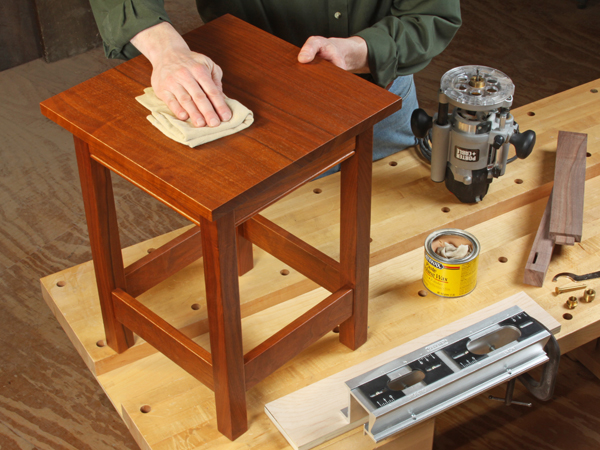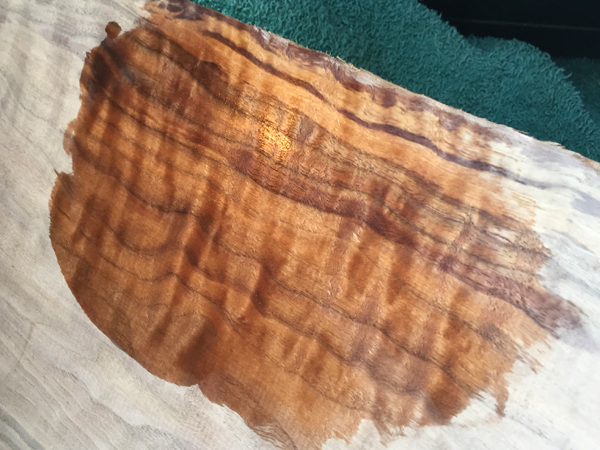
I am in the midst of making a sideboard as a wedding gift for my son and his bride. My wife is going to paint the bottom part of the piece an off-white, then use dark antique wax on top of that. For the top, I wanted to get a very attractive piece of wood and apply a natural wood finish to it that would contrast nicely with the bottom. I have chosen to make the top out of highly figured black walnut. The wood is spectacular! My question is, what kind of finish would you recommend I use in to order to bring out the wonderful grain and figuration in this black walnut while also providing adequate protection? The photo, below, is of one of the pieces of black walnut I am using. I spread some alcohol on it to give you an idea of the grain. – Jim Sullivan

Tim Inman: You’re about to step into the wonderful world of dyes and mordants. There are any number of materials that can do what you are asking. George Frank was a proponent of potassium dichromate for your needs. I agree. It is wonderful in the way it can enhance tight grains and accent special wood features. It is considered a hazardous chemical and you should not be naive if you want to try it. It is widely available quite reasonably. George Frank’s first book, “Adventures in Wood Finishing,” would be a good read and a quick resource for you. My book has information on it, too. Other things will also work. Ammonia is simple and effective. Alum works, tannin is effective, sal ammoniac is another one. Then there is the realm of natural dyes and mordants. Boiled American black walnut husks make a super walnut stain. A little lye is the best mordant for that one. So, test and test and try samples. Find the one you like then go for it! Want a really simple good one? Dilute some orange shellac and use that as a “first” coat. You’ll love it.
Chris Marshall: I second the suggestion of using an orange-colored finish as a way to enhance walnut, because it “warms” up the color of the wood beautifully (especially on kiln-dried walnut, that often turns grayish or greenish as a result of drying). I’ve also found that dyes do a wonderful job of enhancing highly figured wood like yours. By the way, it’s really beautiful!
What I’ve done before is applied orange colored water-based dye, then topcoated that with either lacquer or oil-based varnish. The end result will be that rich brown “walnut” color we all think we want from walnut, because orange shifts the wood color to the “warm” side of the color spectrum (so do reds and yellows). You can see an example of what I’m talking about in the photo of the table above: the finish was orange dye topcoated with spray lacquer.) As Tim suggests, though, test the orange colorant and topcoat on a scrap piece first, to see if you like the effect.





